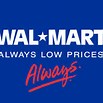The prior post asked you to guess the name and price that you would pay for this case study: http://wp.me/p2OaYY-2np (Part 1)
It is  Annual:1974-annual-report-for-walmart-stores-inc. If you had paid the HIGHEST possible market price in 1974 or the first quarter of 1975 (after reading this annual report), you would have about 1, 300 times your money over 40 years not including annual dividends which today stand at about 31 times what you paid in the market (WMT 2014) through and despite wars, high inflation, double-digit interest rates, civil unrest, political changes and a mundane, extremely competitive industry, AND WMT’s stock price “UNDER-performing” the general stock market one-third of the time. See Wal-Mart 50 Year Chart_SRC.
Annual:1974-annual-report-for-walmart-stores-inc. If you had paid the HIGHEST possible market price in 1974 or the first quarter of 1975 (after reading this annual report), you would have about 1, 300 times your money over 40 years not including annual dividends which today stand at about 31 times what you paid in the market (WMT 2014) through and despite wars, high inflation, double-digit interest rates, civil unrest, political changes and a mundane, extremely competitive industry, AND WMT’s stock price “UNDER-performing” the general stock market one-third of the time. See Wal-Mart 50 Year Chart_SRC.
Eat your heart out Buffett, Munger, Peter Lynch, and all other investing pantheons. The point is you would have made a lifetime fortune sitting on your hands for more than a third of a century. WMT is the pinnacle of an investment–a relentless compounding machine. Buffett said the goal of an investor is to put together a portfolio of compounding machines.
Well, Wal-Mart was the king of compounders; a company that could generate high returns on capital AND reinvest those high returns into similar high returns. As many of you know, it is easy to spot a company with high ROIC or ROE but how do you know if the company can grow and reinvest those high returns at the same high rates? If not, then that company should return the excess capital which it can’t reinvest to you through dividends or appropriate (below intrinsic value) stock buy-backs.
You could have paid any price in 1974, 1975, 1976, 1977, 1978, 1979 and generated over-15% annual returns. How would you know that WMT would keep growing with such high returns? What could you have KNOWN? What can we use for tomorrow’s investments?
AT Hindsight Capital (my firm) we always pick the Wal-Marts.
Joking aside, what is the point of this case study and what are the lessons we can use? Let’s be realistic, we may never find another “Wal-Mart” but at least we can study “perfection” or the best to grasp what principles to look for in a company and an investment. You could do worse than spend weeks or months studying the history of Wal-Mart. Start here Walmart.com/annual-reports and go to here: WalMart_AR. And read: Sam-Walton-Made-America.
What’s the point of viewing one of THE best?
Hockey Player http://youtu.be/gpDdaC1_UGg
NY Giants Lawrence Taylor on the loose: http://youtu.be/puV3z9_gb9g?t=2m56s
Playing the Piano: http://youtu.be/R-JjzU1ZwXE
You gotta at least see and hear excellence to know it.
Let’s get back to Wal-Mart. What is the essence–the key–to its ability to grow profitably for so long? What can you spot in the 1974 annual report that would have alerted you to its competitive advantage? In other words, follow Hannibal Lecter’s tutelage when analzing any investment: What is its nature? http://youtu.be/f33ieCWRWlI.
Here are two hints:
Sam Walton‘s passions included flying his own plane over the American countryside, hunting with his dogs, and sharing his good fortune with his family. But Walton will always be best remembered for his lifelong passion for providing low prices and good service to customers at Wal-Mart, his chain of discount stores that revolutionized the retail industry.
Walton did not invent the discount store when he opened his first store in 1962. But he did do something new. Wal-Mart introduced the concept of selling a large number of items at cheap prices to residents of rural towns—customers other discount retailers ignored. From that base, Walton expanded Wal-Mart across the United States and eventually reached into foreign markets, using the latest technology to keep costs low.
“I think I overcame every single one of my shortcomings by the sheer passion I brought to my work.… If you love your work, you’ll be out there every day trying to do it the best you possibly can.” Read more: Walton
The second hint is that you will not see the financial results of WMT’s competitive advantage in its GROSS margins but in its NET margins. WHY?
The answer to my questions can be found in Competition Demystified (Chapter 5) but don’t cheat yourself. Think it through. In fact, if YOU wanted to get a job at hedge fund, investment firm or even work for a major service firm, you could do a comprehensive study of Wal-Mart’s rise and semi-fall of its competitive advantage and then find a new company or industry (Auto-parts?) where the same factors are at work. Show what you can do while providing a study of value. You will stand out from all the Harvard and Columbia MBAs.
I will post in Part 3: Analysis on WMT next week. Meanwhile focus on what is important.
—
How Markets Work (Trading Places) http://youtu.be/1tmI867fAYU?t=59s
HAVE A GREAT WEEKEND!


Pingback: Walmart: Competitive Advantage & Its Nature (Part 1) | Hurricane Capital